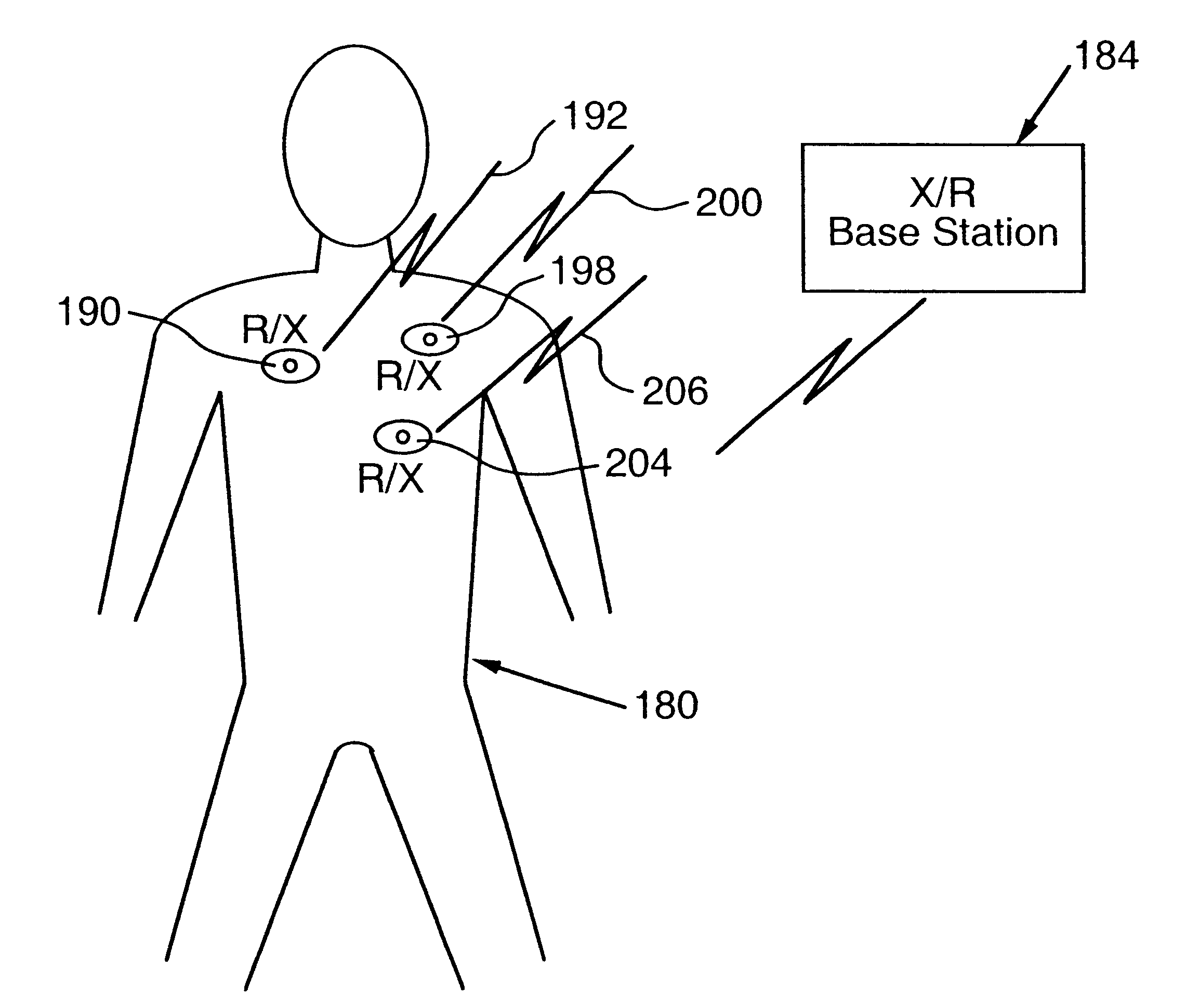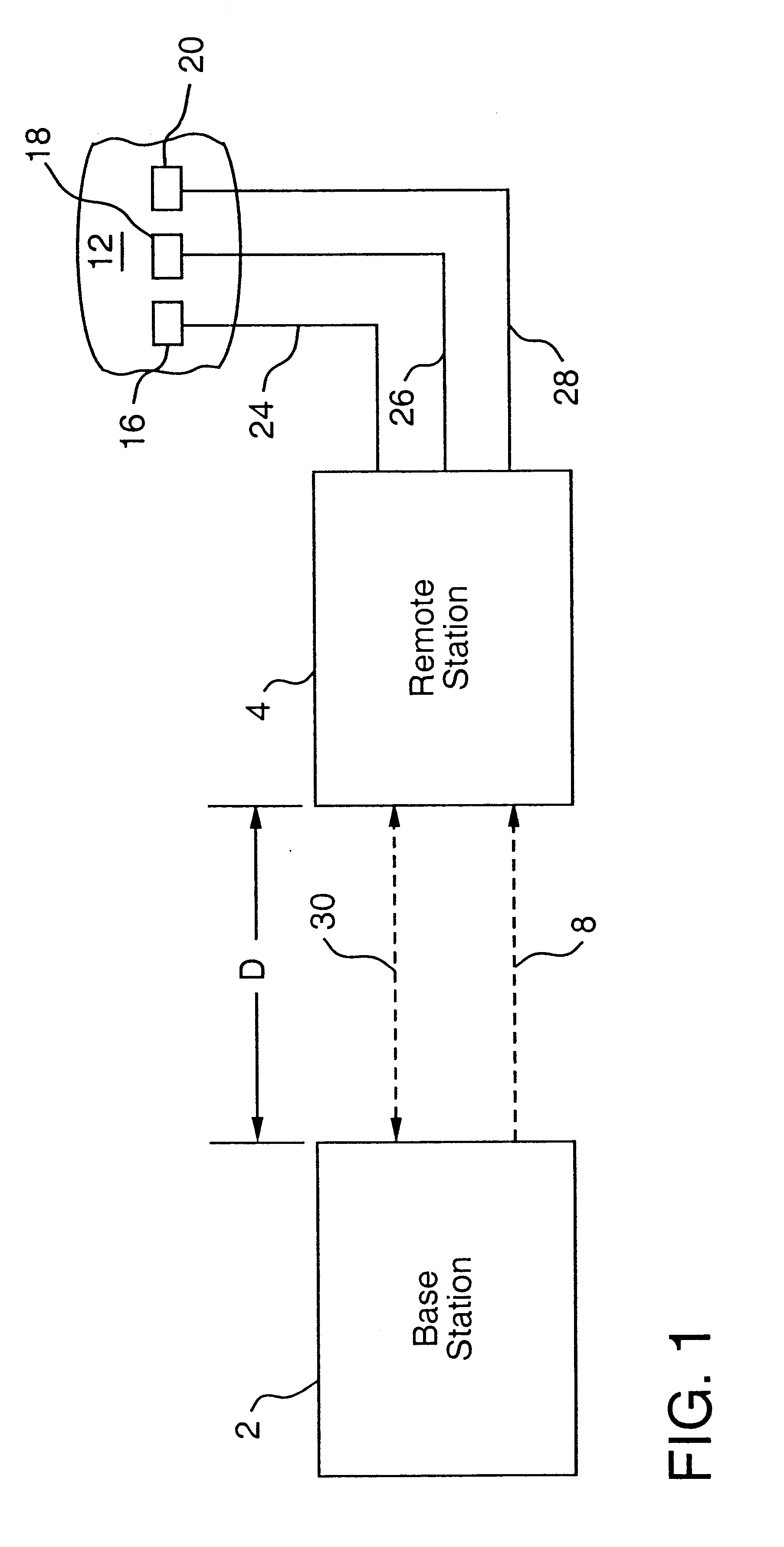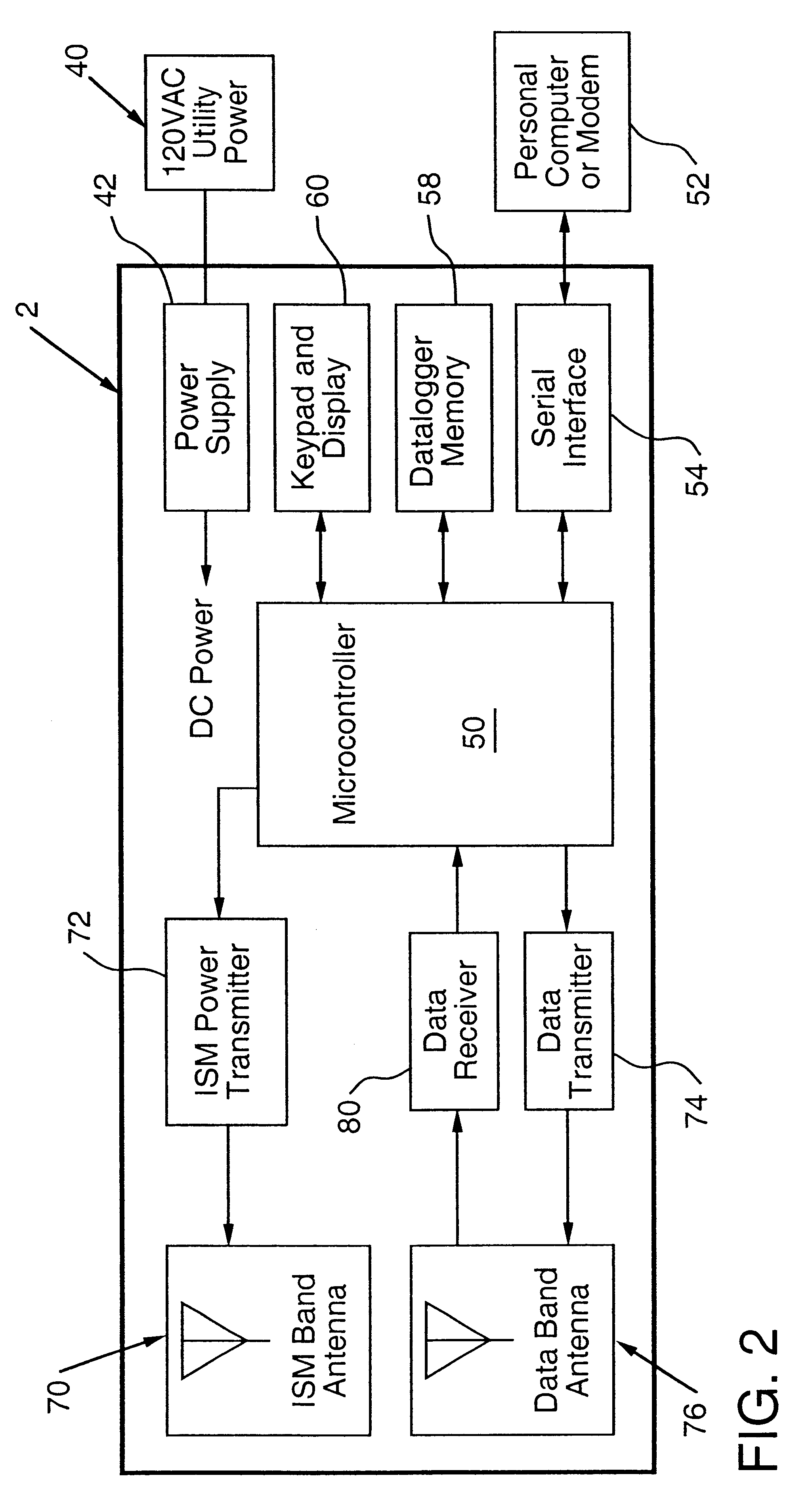Apparatus for energizing a remote station and related method
a technology for energizing remote stations and apparatus, applied in applications, instruments, therapy, etc., can solve problems such as lack of such systems
- Summary
- Abstract
- Description
- Claims
- Application Information
AI Technical Summary
Benefits of technology
Problems solved by technology
Method used
Image
Examples
example
An antenna termed Delta 1 was fabricated using the AMI_ABN process through MOSIS [C]. The total die size was 2200 .mu.M.times.2200 .mu.M with a square spiral antenna slightly more than 3 inches in total conductor length, i.e., 1 / 4 wavelength at 915 MHz.
Experiments were completed where the power measured at the chip, at a variety of orientations, was on the order of 5 mW. The 5 mW value was the power used, P.sub.U, by the remote device (object). The electric field at the Delta 1 antenna was determined through simulation to be 55.52 volts / meter. In the relationship (9), there are three variables A.sub.e, P.sub.U and E.sub.TB.
From the experiments, we have:
(a) A P.sub.U measured value of 5 mW
(b) A calculated / simulated value of E.sub.R =55.52 volts / meter
(c) An unknown value for A.sub.e
In addition, the transmitted power, P.sub.TB, from the base station antenna was known. From the antenna radiation pattern and the directive gain, the power density at the device antenna can be calculated.
(d...
PUM
 Login to View More
Login to View More Abstract
Description
Claims
Application Information
 Login to View More
Login to View More - R&D
- Intellectual Property
- Life Sciences
- Materials
- Tech Scout
- Unparalleled Data Quality
- Higher Quality Content
- 60% Fewer Hallucinations
Browse by: Latest US Patents, China's latest patents, Technical Efficacy Thesaurus, Application Domain, Technology Topic, Popular Technical Reports.
© 2025 PatSnap. All rights reserved.Legal|Privacy policy|Modern Slavery Act Transparency Statement|Sitemap|About US| Contact US: help@patsnap.com



